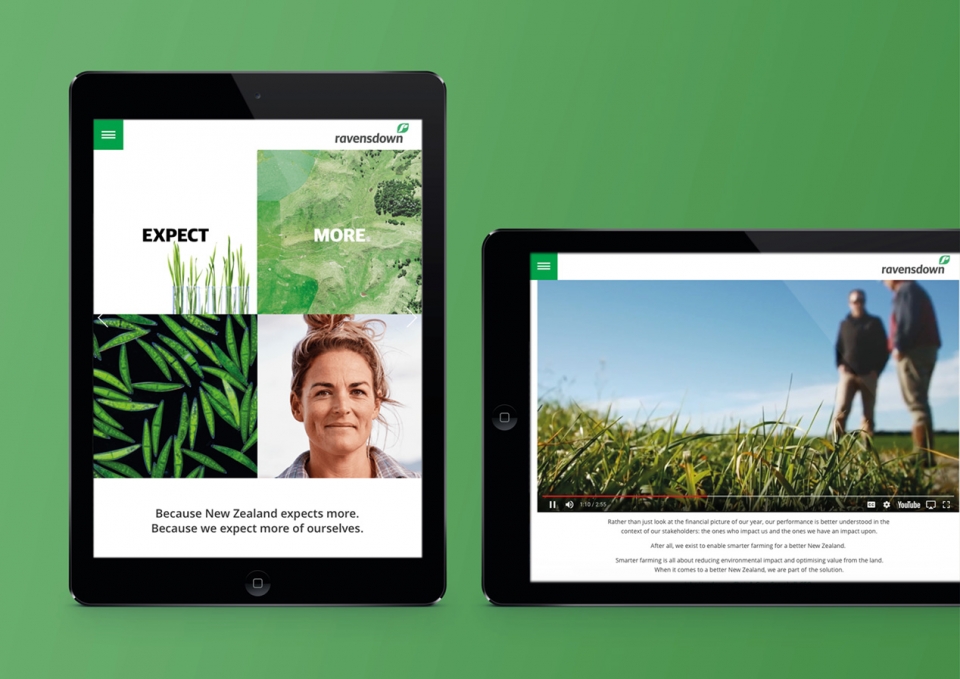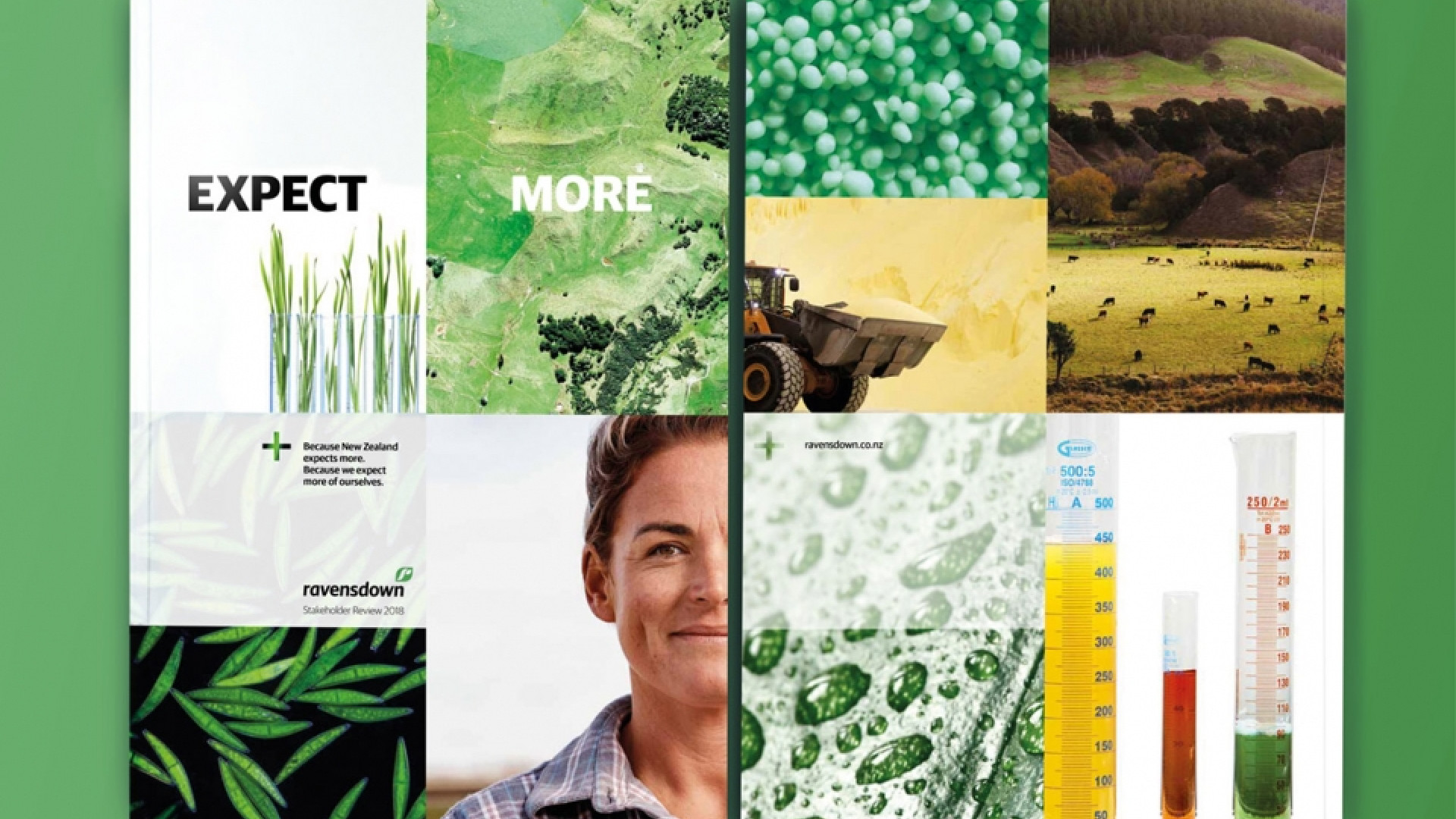Guest post on Ravensdown’s Integrated Reporting journey by Gareth Richards, Group Communications Manager

To listen is to learn
Every human being can recognise when they’re being listened to.
For me, having been involved on a three-year journey with Ravensdown, I think that’s the place to start. And perhaps can be summed up with a question: how much does the process of listening form your strategy?
Not just listening to people like our neighbours who are concerned with dust, noise and their property values. But listening to the signals that alert any business to opportunity and risk. Listening to the sceptics and antagonists who may have a grain of truth in what they are saying. Listening to the story your own people tell when they are asked what your company does and why they are here.
So let’s talk about our Integrated Reporting journey and the Ravensdown’s story . . .
The changing role of Ravensdown
Founded in 1977 as a buying co-operative, the company was set up by farmers to scour the globe looking for mineral fertilisers and nutrients to import and manufacture. For 40 years, this enabled farmers to grow food for animals and humans that became the envy of the world.
But in 2017, it was clear that the co-operative was much more complex than a simple import-and-process model. It had adapted to its environment. Its advisors were seen as critical parts of the farm teams - fertiliser is farming’s second largest expense. And our highly qualified consultants advising on environmental mitigation became the fastest growing part of the business. New technology was bringing new precision and traceability so the right amount of the right nutrient went in the right place.
Instead of being seen only as a fertiliser manufacturer, we needed to be seen as the farm nutrient and environmental experts. That was who we really were. But like all Integrated Reporting journeys, Ravensdown’s started with “why we are here”.
And through the normal, maze-like process with lots of blind corners that most companies go through, we found our way out of the maze and with a sharply focused purpose:
Enabling smarter farming for a better New Zealand
The Integrated Reporting Journey
For the past three years, I’ve worked with the CFO, Internal Auditor, leadership team and board, and our design agency, Insight Creative, as we’ve moved closer to integrated reporting. I thought I’d share six insights about the experience with you today.
As a comms guy, stories are my meat and drink. I started doing this job before corporate social responsibility became a thing, but I knew things had really changed when the head of our Audit and Risk committee told me that the stories in our integrated report had to be punchy and relatable. It felt like all the advice I’d been giving corporate finance people for 20 years was being played back to me!
So… six insights. Good news. We’ve already covered one of them!
1. The Power of listening
2. Starting with why
Starting with why (Simon Sinek) means thinking broadly about the intersection and combination of capitals that you impact and that impact you. We look for connection. A joining of the dots.
For example: Profit becomes an outcome not a purpose. Value becomes the lens with which to view the entire business. Risks become more specific and manageable. The forward view comes into focus.
It takes time! And it’s hard. We must have changed our business model diagram 25 different times and that in the first year alone!
In terms of reporting, instead of listing every concern a stakeholder has, we share how we’re going about learning what matters.
Instead of listing every action we’ve taken, we highlight which aspects of our strategy relate to those things that matter.
Once you’re understanding what’s important to your stakeholders and business, are clear on your purpose and ideas on how to progress towards that, now you come to the question of how are you going to demonstrate progress? What are you going to be reporting on?
3. Choose the right targets
We all know the phrase “What gets measured gets managed.” That’s a lot more catchy than my version: “What gets publicly disclosed as a target that is comparable over time, receives sustained focus”.
This has proved a challenge across the three years we’ve been trying - board and leadership team need to understand the implications and possible unforeseen consequences of declaring a target to the world. It would be easy to do badly.
Closely related to number 3 is…
4. Get the right data
Most of our targets and data sets were by functional silos where specialist managers report upward. But the data that’s easiest to find is not often the right data. We had a lot of financial data but nowhere near enough non-financial data. The holy grail is the integrated thinking that’s needed as you consider integrated reporting and the report itself.
An integrated measure is harder to conceptualise and but worth persevering with…
In our case, an example is the strength of a superphosphate granule. This is impacted by operational or procurement choices, by training and handling protocols, by capital investment in processing machinery and storage sheds. We report on this as a material indicator (its value relates to reputation and environmental impacts – a dusty granule is bad for neighbours and for farmers spreading near waterways).
We started with the rear view mirror approach to quality and then we could move on to the forward view of targets around improvements.

5. Look to leverage
- In the first two years, our online report went from a PDF on our website to our own microsite, that’s also a link at the bottom of all staff’s email signatures: a good way to encourage staff to read and understand!
- Managers go through the print document with their teams and every employee gets a copy with a personal letter from the CEO.
- The website is optimised for phones and contains videos and other animations you can’t get from the paper document.
- This year much of the compliance related information will be on the website, so the document doesn’t blow out to a hundred pages. In fact, the digital domain frees up the printed format, so it can break conventions of a typical looking annual report. This year we will also be sharing the site a lot more via LinkedIN, Twitter and Facebook and we will be making the site more sophisticated in terms of structure.
I’ve saved the most important for the end. And that is all about how you make a start…
6. Just make a start!
There are 19 parts of an integrated reporting framework so it’s easy to get overwhelmed.
But the key thing is to make a start and build momentum. It’s like getting on a roundabout. Doesn’t matter where you get on or where you are on the ride, but that you’re actually on board and have changed your perspective.
We knew that we weren’t aiming for a fully-fledged, quality assured Integrated Report from year one. It was more the spirit of Integrated Reporting we were going after. We called them stakeholder reviews for the two years. This year we will call it an Integrated Report. But like any good journey, we’re still learning and gaining clarity.
One thing we are clear on. Our reporting is a process of establishing trust. Through transparency, disclosure and frankness.
We can’t be scared of a bad result. Better that performance gaps are identified than accusations of cherry picking or green washing.
The benefits of <IR> to Ravensdown that we've already seen
- Increased understanding of value creation
- Created opportunities
- Reduced silo thinking in the business
- Great morale – especially ahead of criticism e.g. from activists…
- Longer term and aspirational thinking
- Innovative
- Improving what is measured – better reporting
Gareth Richards, Ravensdown

